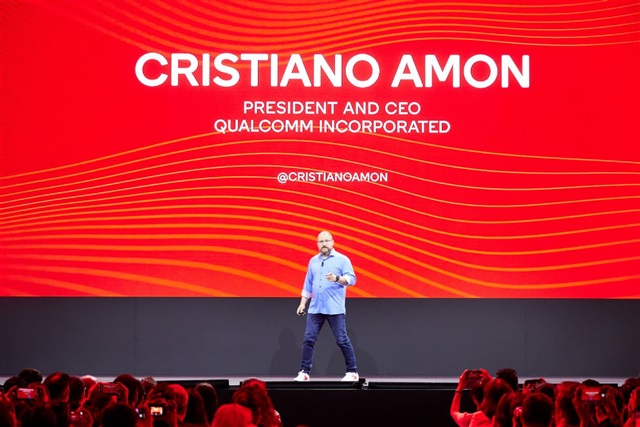Qualcomm is at a critical crossroads as it attempts to pivot beyond its reliance on the smartphone business in the era of artificial intelligence and expands into growth areas such as automotive, AR/VR, and AI-powered PCs.
But the shift hasn't been easy. VR and AR have yet to show consistent growth, the automotive division still accounts for less than 10 % of overall revenue, and even Qualcomm's licensing business brings in more money. Meanwhile, AI PC shipments remain limited. As a result, smartphones continue to generate nearly 60% of Qualcomm's total revenue.
With growth in the global smartphone market slowing, the company's performance now hinges more heavily on demand for premium models that drive higher upgrade cycles.
Source: Qualcomm; compiled by DIGITIMES, August 2025
Apple and Samsung diversify
Apple's move to develop its own baseband chips is gaining momentum, with the key question now focused on how quickly the company can fully replace Qualcomm components. At the same time, Samsung Electronics, once a major driver of Qualcomm's premium mobile chip business, is also taking steps to reduce its reliance.
Although Samsung has struggled to integrate its in-house Exynos system-on-chips (SoCs) into flagship devices, with the Galaxy S25 series still expected to use Qualcomm Snapdragon SoCs in 2025, the Korean electronics giant is steadily improving the performance of its Exynos line.
Samsung announced on July 31 that it plans to strengthen the competitiveness of its Exynos chips, aiming to reintegrate them into flagship models by 2026. Samsung's chip manufacturing unit also plans to start volume production of next-generation Exynos chips using a 2nm GAA process in the second half of 2025. That timeline signals Qualcomm's exclusive role in supplying processors for Galaxy S-series devices could soon be coming to a close.
Data center ambitions
Qualcomm has announced significant plans to enter the AI PC and data center. However, these initiatives have not yet produced a noticeable impact on the company's financial results. Should Qualcomm face difficulties advancing in the AI space alongside potential challenges in the smartphone market, its overall strategic shift may encounter obstacles.
Qualcomm has been preparing to enter the data center market for several years. In May, CEO Cristiano Amon said he believes a CPU designed for the AI era will serve as Qualcomm's entry point into that market. During a recent earnings call, he offered new details on the company's evolving data center strategy.
Amon noted that as AI inference workloads grow, cloud service providers are building more efficient infrastructure to handle the demand. The industry's move away from traditional x86 CPUs toward custom Arm-based processors creates an opening for Qualcomm to compete in cloud and AI environments.
He revealed that the company is developing a general-purpose CPU tailored for hyperscale cloud providers. Qualcomm is also working on additional data center components, including accelerator cards and server racks, designed to support large-scale AI inference clusters.
While Qualcomm's pivot into infrastructure may seem like a departure from its mobile chip roots, the company has been steadily revamping its data center strategy under Amon's leadership.
Licensing business rebounds
Qualcomm's licensing division (QTL) delivered strong performance in the latest quarter, buoyed by a broad 4G and 5G licensing agreement with Chinese smartphone maker Transsion. The company also renewed long-term licensing deals with two other Chinese handset manufacturers.
However, talks with Huawei over patent renewals remain stalled. Despite the expiration of their previous agreement, Qualcomm emphasized that no revenue from Huawei was included in QTL's latest quarterly figures.
Source: International Data Corporation (IDC); compiled by DIGITIMES, August 2025
Source: Qualcomm; compiled by DIGITIMES, August 2025
Article edited by Jingyue Hsiao



